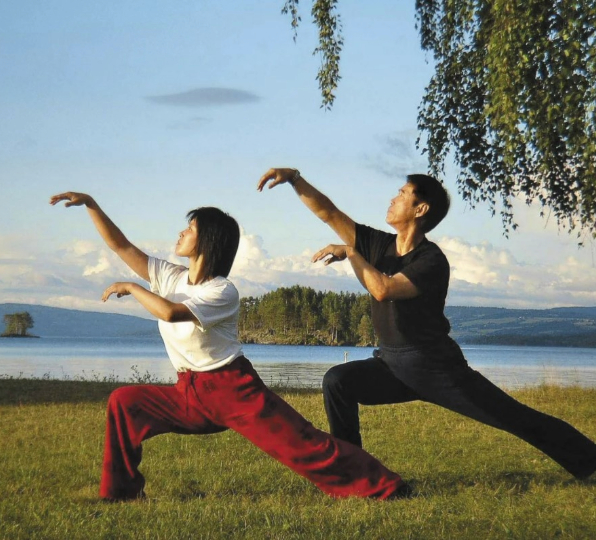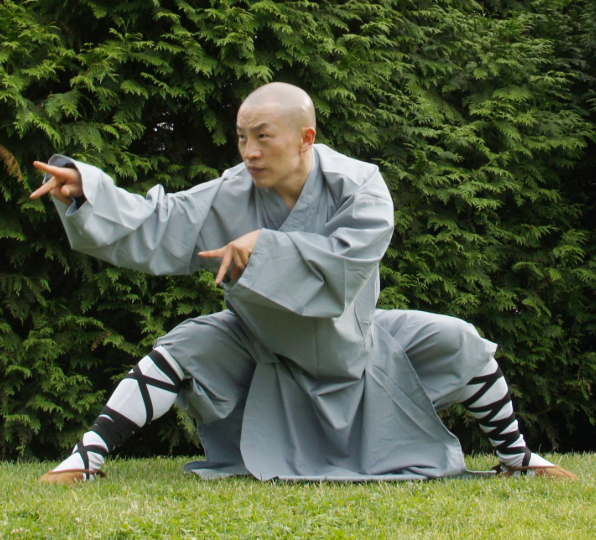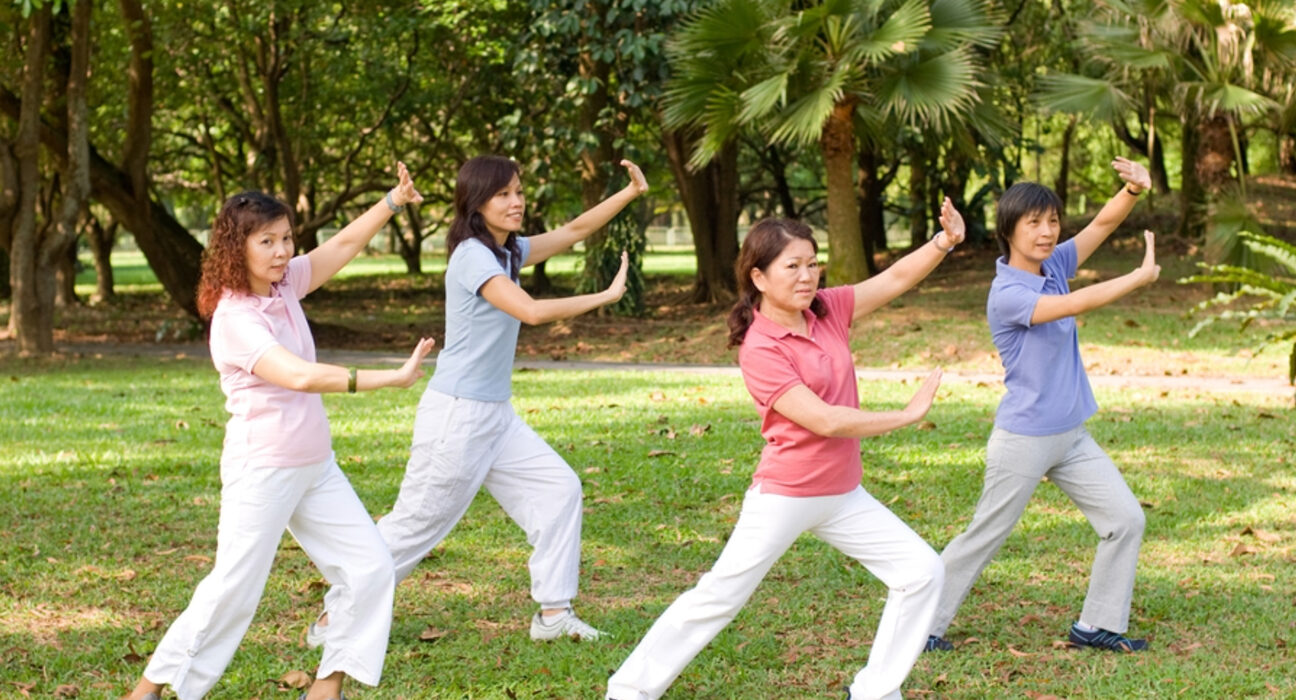Introduction:
Many people use different strategies to find balance and comfort in a fast-paced world where stress and tension seem to be constant companions. The ancient Chinese martial art of tai chi integrates fluid movements, deep breathing, and mindfulness to provide a peaceful route to wellbeing. Let’s explore the fundamentals of Tai Chi, its history, its tenets, and the numerous advantages it provides for overall health and wellbeing.
1. Origins and History
Tai Chi, also known as Tai Chi Chuan, is a traditional Chinese martial art and mind-body practice that has a rich history dating back to ancient China. Its origins are steeped in legend and mythology, with tales tracing its development to Zhang Sanfeng, a legendary Taoist monk who is said to have lived during the late Song dynasty (960–1279 AD) or early Ming dynasty (1368–1644 AD). According to legend, Zhang Sanfeng was inspired to create Tai Chi after witnessing a confrontation between a snake and a crane, observing their graceful and fluid movements in combat.
While the historical accuracy of these legends is uncertain, they serve to highlight the deep connection between Tai Chi and Chinese philosophy, particularly Taoism. Taoist principles such as balance, harmony, and the interplay of yin and yang are integral to the practice of Tai Chi, both in its martial applications and its emphasis on cultivating inner peace and vitality.
The precise origins of Tai Chi are difficult to pinpoint due to the lack of written records from ancient times. However, it is widely accepted that Tai Chi emerged from a synthesis of existing martial arts practices in China, including various forms of qigong (energy cultivation) and traditional Chinese medicine. Over centuries of development, Tai Chi evolved from a system of self-defense into a holistic practice encompassing physical health, meditation, and philosophical inquiry.
During the Ming dynasty, Tai Chi began to gain popularity among Chinese martial artists and scholars, who recognized its effectiveness as a martial art and its potential for promoting health and longevity. Tai Chi masters refined and systematized the art, codifying its principles and forms into distinct styles, each with its own unique characteristics and emphasis.
In the 20th century, Tai Chi experienced a resurgence in China and gained international recognition as a form of exercise and meditation. It was promoted by the Chinese government as part of efforts to promote public health and physical fitness, leading to widespread adoption of Tai Chi among people of all ages and backgrounds. Today, Tai Chi is practiced by millions of people around the world, both as a martial art and as a gentle form of exercise for promoting health, relaxation, and inner peace.
Overall, Tai Chi’s origins and history reflect its deep roots in Chinese culture and philosophy, as well as its enduring appeal as a holistic practice for cultivating physical, mental, and spiritual well-being. Whether practiced for self-defense, health promotion, or personal growth, Tai Chi continues to inspire and enrich the lives of countless individuals worldwide.
2.Principles of Tai Chi
At the core of Tai Chi are several fundamental principles that guide its practice and philosophy. These principles reflect the ancient Chinese concepts of balance, harmony, and the cultivation of Qi, or vital energy, which are central to traditional Chinese medicine and martial arts. Understanding and embodying these principles is essential for practitioners to derive maximum benefit from Tai Chi practice.
- Balance: Balance is a foundational principle in Tai Chi, both in terms of physical equilibrium and the balance of yin and yang energies within the body. Tai Chi movements are designed to promote balance by fostering stability, coordination, and proprioception—the body’s awareness of its position in space. Practitioners learn to root themselves firmly to the ground while maintaining a relaxed and centered posture, enabling them to move with grace and stability.
- Harmony: Tai Chi seeks to cultivate harmony between the body, mind, and spirit, as well as harmony with the surrounding environment. This principle is expressed through the smooth and continuous flow of movements, which are performed with a sense of ease and effortlessness. By synchronizing breath with movement and fostering a state of mental calmness, practitioners harmonize their internal energies and promote overall well-being.
- Cultivation of Qi: In traditional Chinese philosophy, Qi is believed to be the vital energy that animates all living beings and sustains health and vitality. Tai Chi aims to cultivate and harmonize the flow of Qi within the body through mindful movement, breath control, and mental focus. By practicing Tai Chi regularly, practitioners can enhance their Qi circulation, strengthen their internal organs, and promote holistic health and longevity.
- Slow, Deliberate Movements: Unlike fast-paced martial arts or aerobic exercises, Tai Chi emphasizes slow, deliberate movements that flow seamlessly from one to another. This deliberate pace allows practitioners to maintain awareness of their body’s alignment, sensations, and breath, fostering a deep sense of relaxation and mindfulness. Slow movements also facilitate the internal cultivation of Qi and encourage the release of tension and stress from the body.
- Proper Posture and Alignment: Tai Chi places great emphasis on maintaining proper posture and alignment throughout its movements. Practitioners learn to align their body structure according to anatomical principles, with particular attention to the spine, pelvis, and joints. By aligning the body correctly, practitioners can optimize the flow of Qi, minimize strain on the joints, and promote overall structural integrity and balance.
- Breath Control: Conscious breathing is a key component of Tai Chi practice, helping to regulate the flow of Qi and synchronize movement with internal rhythm. Practitioners are encouraged to breathe deeply and naturally, coordinating inhalation and exhalation with specific movements. By cultivating awareness of the breath and using it to guide movement, practitioners can enhance relaxation, focus, and energy circulation.
3.Health Benefits
Tai Chi, renowned for its gentle and flowing movements, offers a myriad of health benefits that encompass both physical and mental well-being. Rooted in ancient Chinese philosophy and martial arts, this practice has garnered attention worldwide for its holistic approach to health promotion and disease prevention. Here are some of the notable health benefits associated with regular Tai Chi practice:
- Improved Balance and Coordination: One of the most widely recognized benefits of Tai Chi is its ability to enhance balance and coordination. The slow and deliberate movements, coupled with weight shifting and controlled transitions, help strengthen the muscles involved in maintaining stability. This improvement in balance is particularly beneficial for older adults, reducing the risk of falls and related injuries.
- Enhanced Flexibility and Joint Mobility: Tai Chi’s gentle stretching and range-of-motion exercises promote flexibility and joint mobility, helping to alleviate stiffness and increase overall physical comfort. By systematically moving through a variety of postures and transitions, practitioners gradually improve their flexibility, making daily activities easier and more comfortable.
- Stress Reduction and Emotional Well-being: Tai Chi’s emphasis on mindfulness, relaxation, and focused breathing makes it an effective tool for stress reduction and emotional well-being. Regular practice has been shown to lower levels of stress hormones, reduce symptoms of anxiety and depression, and promote a sense of calmness and inner peace. The meditative aspect of Tai Chi encourages practitioners to cultivate a present-moment awareness, allowing them to release tension and find balance amidst life’s challenges.
- Strengthened Immune System: Emerging research suggests that Tai Chi may have immune-boosting effects, helping to strengthen the body’s natural defense mechanisms against illness and infection. By promoting relaxation, reducing inflammation, and enhancing circulation, Tai Chi supports overall immune function, leading to improved resistance to common ailments and better health outcomes.
- Better Sleep Quality: Many individuals report improved sleep quality and duration as a result of regular Tai Chi practice. The combination of physical activity, relaxation techniques, and mental focus can help quiet the mind, alleviate insomnia, and promote deeper, more restorative sleep. By reducing stress and tension in the body, Tai Chi prepares practitioners for a more restful and rejuvenating night’s sleep.
Overall, the holistic nature of Tai Chi makes it a valuable practice for promoting health and well-being across the lifespan. Whether you’re seeking to improve balance, reduce stress, or enhance overall vitality, Tai Chi offers a gentle yet powerful pathway to optimal health. With consistent practice and dedication, individuals of all ages and fitness levels can reap the numerous benefits of this ancient art form, enjoying greater physical comfort, mental clarity, and emotional resilience in their daily lives.
4.Mindfulness and Meditation
Tai Chi, often referred to as a moving meditation, embodies the principles of mindfulness and meditation in motion. Rooted in ancient Chinese philosophy and martial arts, this gentle practice invites practitioners to cultivate a heightened state of awareness and presence, fostering inner peace and mental clarity. Here’s how Tai Chi serves as a vehicle for mindfulness and meditation:
- Present-Moment Awareness: At its core, Tai Chi encourages practitioners to be fully present in the moment, attuning their attention to the sensations of the body, the rhythm of the breath, and the flow of movement. By focusing on the here and now, individuals can let go of distractions, worries, and anxieties, immersing themselves in the richness of each unfolding moment.
- Mindful Movement: The slow, deliberate movements of Tai Chi, characterized by fluid transitions and graceful postures, provide a platform for mindful movement. As practitioners move through the various forms and sequences, they pay close attention to the sensations, alignment, and energy flow within their bodies. This mindful engagement with movement fosters a deeper connection between mind and body, promoting physical harmony and balance.
- Centering Breathwork: Central to Tai Chi practice is the cultivation of mindful breathing, which serves as an anchor for awareness and presence. Practitioners synchronize their breath with each movement, inhaling deeply to expand the abdomen and exhaling slowly to release tension and ground the body. This conscious breathing pattern calms the nervous system, reduces stress, and enhances mental focus, allowing individuals to enter a state of relaxed alertness.
- Inner Stillness Amidst Motion: Despite the dynamic and flowing nature of Tai Chi movements, practitioners learn to cultivate a sense of inner stillness amidst motion. By embracing the concept of wu wei, or effortless action, individuals harmonize their intentions with the natural rhythm of the body, allowing movement to arise spontaneously and effortlessly. This integration of stillness and motion creates a serene and meditative state of being, where inner peace and tranquility can flourish.
- Emotional Resilience: Regular practice of Tai Chi has been shown to enhance emotional resilience and well-being. By cultivating mindfulness and meditation through movement, practitioners develop greater self-awareness, emotional regulation, and adaptive coping strategies. Tai Chi offers a safe and supportive space for individuals to explore their thoughts and emotions, fostering greater clarity, acceptance, and equanimity in the face of life’s challenges.
In essence, Tai Chi serves as a dynamic pathway to mindfulness and meditation, inviting individuals to embark on a journey of self-discovery, inner transformation, and holistic well-being. Through the practice of mindful movement, centered breathwork, and present-moment awareness, practitioners can cultivate a deeper sense of connection with themselves, their surroundings, and the world around them, fostering greater harmony, balance, and peace in their lives.
5.Getting Started
Getting started with Tai Chi is a journey open to people of all ages, fitness levels, and walks of life, making it an accessible and inclusive practice for virtually everyone. Whether you’re a seasoned athlete looking to enhance your physical well-being or someone seeking a gentle yet effective form of exercise, Tai Chi offers a welcoming entry point into the world of mindful movement and holistic health. Here’s how to embark on your Tai Chi journey:
- Embrace Beginner’s Mind: Approach Tai Chi with a sense of curiosity, openness, and humility, adopting a beginner’s mindset. Recognize that every journey begins with a single step and that progress is made through consistent practice and patience. Let go of expectations or preconceived notions, allowing yourself to explore the practice with a sense of wonder and discovery.
- Start with Simple Movements: Begin your Tai Chi journey by learning a few simple movements or forms that serve as foundational building blocks. Focus on mastering basic stances, postures, and transitions before progressing to more complex sequences. Start with gentle warm-up exercises to prepare your body and mind for the practice, gradually increasing the intensity and duration of your sessions as you grow more comfortable.
- Seek Guidance from Experienced Instructors: Consider joining a Tai Chi class led by experienced instructors who can provide guidance, support, and personalized instruction. Look for classes offered in community centers, gyms, martial arts studios, or wellness centers, choosing a teacher whose teaching style resonates with you. Experienced instructors can offer valuable insights, corrections, and modifications to help you refine your technique and deepen your understanding of the practice.
- Practice Regularly: Cultivate a consistent Tai Chi practice by dedicating time each day or week to engage in mindful movement. Set aside a quiet and spacious environment free from distractions, where you can fully immerse yourself in the practice. Start with short practice sessions lasting 10 to 15 minutes and gradually increase the duration as you build stamina and endurance. Remember that progress is made through repetition and regularity, so commit to making Tai Chi a regular part of your routine.
- Listen to Your Body: Pay attention to your body’s signals and sensations as you practice Tai Chi, tuning into any areas of tension, discomfort, or resistance. Honor your body’s limitations and boundaries, modifying movements or taking breaks as needed to prevent injury and promote self-care. Cultivate self-compassion and patience as you navigate the ups and downs of your Tai Chi journey, trusting in your body’s innate wisdom and capacity for healing.
In summary, getting started with Tai Chi is about embracing the journey with an open heart and mind, committing to regular practice, seeking guidance from experienced instructors, and listening to your body’s wisdom every step of the way. By cultivating mindfulness, patience, and perseverance, you can embark on a transformative Tai Chi journey that nurtures your body, mind, and spirit, fostering greater health, vitality, and well-being.


Conclusion:
Calisthenics offers a holistic approach to fitness that emphasizes bodyweight movements, functional strength, and overall well-being. Whether you’re a beginner looking to improve your strength and flexibility or an experienced athlete seeking new challenges, calisthenics provides a versatile and effective training method that can be tailored to meet your individual goals. Embrace the beauty of movement, strength, and vitality with calisthenics as you embark on your journey to a healthier, stronger, and more resilient self.












